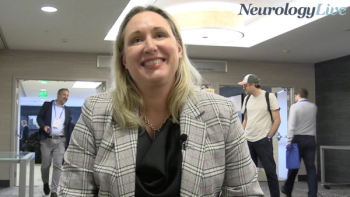
Out-of-Pocket Costs Steadily Increasing for Neurologic Care
A recent analysis of UnitedHealthcare insurance claims revealed increases of almost 200% for some services between 2001 and 2016.
A recent study published in Neurology has found that the number of patients who pay out-of-pocket (OOP) for neurologic diagnostic services is increasing. While OOP costs vary across patients and tests, the data suggest that these costs are also generally rising.
The largest increases were seen for
Chloe Hill, MD, MS, assistant professor of neurology, University of Michigan Medical School, University of Michigan Comprehensive Epilepsy Center, and colleagues wrote that “an increasing number of patients pay OOP for neurologic diagnostic services. These costs are rising and vary greatly across patients and tests. The cost sharing burden is particularly high for the growing population with high-deductible health plans (HDHPs). In this setting, neurologic evaluation might result in financial hardship for patients.”
Hill and colleagues analyzed data from the ClinformaticsTM Datamart database, which contains detailed medical and pharmaceutical claims for more than 73 million individuals insured by United Healthcare from January 2001-June 2016. From this database, they identified 3,724,342 patients who received 14,222,479 neurologic services. Of these, 1,098,986 were electromyogram/nerve conduction studies (EMG/NCS), 751,930 were MRIs, 641,693 were EEGs, 410,460 were polysomnograms (PSGs), 95,211 were carotid ultrasounds (CUSs) 64,647 were computerized tomography scans (CTs), and 11,159,552 were E/M visits to neurologists, 26.9% of which were new visits.
Hill and colleagues found that over the study period, the number of patients who paid any OOP costs increased for diagnostic testing. This increase was from 30.3% in 2001 to 52.5% in 2016 for EMG/NCS, from 23.5% to 69.5% for MRI, from 28.3% to 45.9% for EEG, from 32.5% to 42.5% for PSG, from 23.5% to 47.9% for CUS, and from 26.7% to 47.7% for CT. For E/M visits, 86.5-95.2% of patients paid OOP costs across all years.
They also found that the mean proportion of the total service cost that was paid OOP increased over the 15 years. This increase was from 22.5% to 27.4% for EMG/NCS, from 6.8% to 15.0% for MRI, from 10.6% to 15.0% for EEG, from 8.6% to 16.1% for PSG, from 9.4% to 11.1% for CUS, for 6.7% to 15.1% for CT, and from 11.7% to 17.6% for E/M.
Patients who were enrolled in an HDHP had greater odds of paying OOP costs for MRI (odds ratio [OR], 1.23; 95% CI, 1.18–1.28), EMG/NCS (OR, 4.75; 95% CI, 4.56–4.94), and EEG (OR, 4.66; 95% CI, 4.42–4.91). These patients were also more likely to pay increased OOP costs for MRI (expenditures point estimate [exp(PE)], 1.17; 95% CI, 1.14–1.20), EMG/NCS (exp(PE), 1.38; 95% CI, 1.35–1.41), and EEG (exp(PE), 1.42; 95% CI, 1.38–1.47).
Patients enrolled in HDHPs also had higher odds of paying OOP costs above the 90th percentile for MRI (OR, 1.29; 95% CI, 1.22–1.36), EMG/NCS (OR, 4.69; 95% CI, 4.49–4.90), and EEG (OR, 3.90; 95% CI, 3.67–4.16). An increasing number of patients enrolled in HDHPs throughout the study period: from 0.0% of the study population in 2001 to 11.0% in 2016.
“It is critical for physicians and patients to consider cost in individualizing decisions about healthcare utilization and greater price transparency would be beneficial,” Hill and colleagues concluded.
One effort to help patients understand cost is the Trump administration’s price transparency rule that went into effect on January 1, 2021. To avoid noncompliance monetary penalties, hospitals must post these costs in a comprehensive machine-readable file with all items and services or in a display of shoppable services in a patient-friendly format. Some doctors and organizations such as the American Hospital Association (AHA) are against the order, which may confuse patients that each have unique negotiated costs with their health plans and hurt hospitals.2
Hill and colleagues also touched on this order in their paper, writing that “although there has been recent activity to mandate price reporting (e.g., hospitals must publicly post standard charge information), including an executive order by President Trump in June 2019, it is not clear that this data will be presented in a way that is useful to patients.”
REFERENCES
1. Hill CE, Reynolds EL, Burke JF, et al. Increasing out-of-pocket costs for neurologic care for privately-insured patients. Neurology. Published online December 23, 2020. doi: 10.1212/WNL.0000000000011278
2. Reynolds KA. Hospital price transparency rule takes effect. Medical Economics. Published online January 4, 2021. Accessed January 5, 2021. https://www.medicaleconomics.com/view/hospital-price-transparency-rule-takes-effect
Newsletter
Keep your finger on the pulse of neurology—subscribe to NeurologyLive for expert interviews, new data, and breakthrough treatment updates.




































